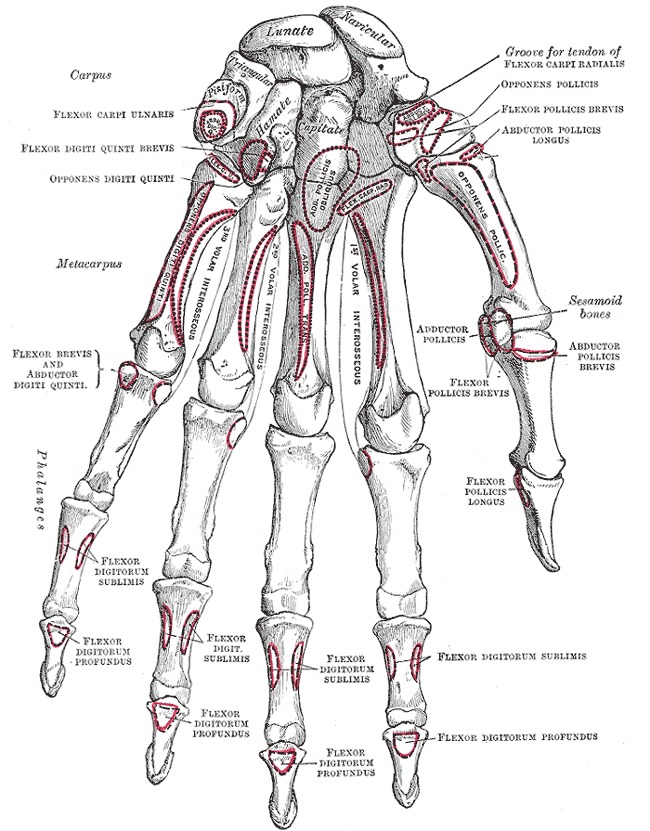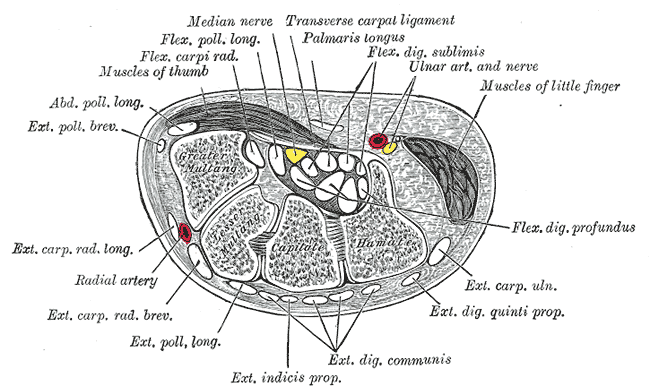Hamate bone
The hamate bone (unciform bone) is a bone in the human hand that may be readily distinguished by its wedge-shaped form, and the hook-like process which projects from its volar surface. It is situated at the medial and lower angle of the carpus, with its base downward, resting on the fourth and fifth metacarpal bones, and its apex directed upward and lateralward.
The etymology derives from the Latin hamatus "hooked," from hamus which means "hook."
Surfaces
The superior surface, the apex of the wedge, is narrow, convex, smooth, and articulates with the lunate.
The inferior surface articulates with the fourth and fifth metacarpal bones, by concave facets which are separated by a ridge.
The dorsal surface is triangular and rough for ligamentous attachment.
The volar surface presents, at its lower and ulnar side, a curved, hook-like process, the hamulus, directed forward and lateralward.
The medial surface articulates with the triangular bone by an oblong facet, cut obliquely from above, downward and medialward.
The lateral surface articulates with the capitate by its upper and posterior part, the remaining portion being rough, for the attachment of ligaments.
Clinical significance
This is the bone most commonly fractured when an amateur golfer hits the ground hard with his/her golf club on his/her downswing. The fracture is usually a hairline fracture, commonly missed on normal X-Rays. Symptoms are pain aggravated by gripping, tenderness over the hamate and symptoms of irritation of the ulnar nerve. If the hamate bone is broken, it immobilizes your ring finger, pinky finger, and wrist until it is healed.
See also
Additional images
-
Bones of the left hand. Volar surface.
-
Bones of the left hand. Dorsal surface.
-
Transverse section across the wrist and digits.
Template:Gray's Template:Bones of upper extremity sk:Háková kosť


